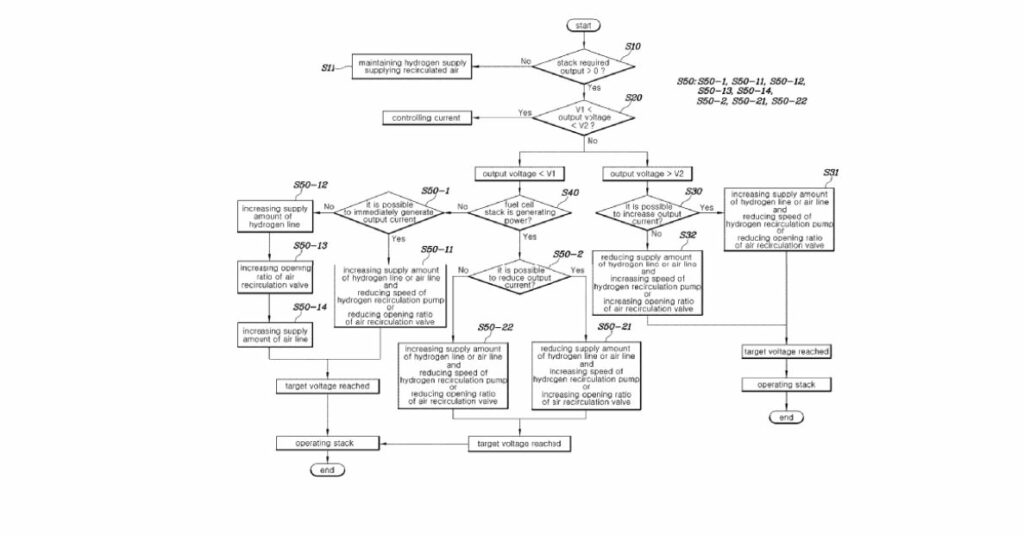Hyundai Motor Company has unveiled a new patent for a fuel cell system and its control method, signaling a step forward in hydrogen technology. This article delves into the patent’s specifics and potential implications for the industry.
Overview of the Patent
The patent “Fuel Cell System and Control Method” introduces a novel approach to managing fuel cell operations. This system has a controller designed to adjust the opening ratio of an air recirculation valve or the speed of a hydrogen recirculation pump. These adjustments are tailored according to the required output of the fuel cell stack and the magnitude of the output voltage or current.
Unique Features and Improvements
The patented technology boasts several unique features that set it apart from existing solutions:
1. Precise Control Mechanism: The controller’s ability to modulate the air recirculation valve and the hydrogen pump’s speed offers finer control over the fuel cell’s performance.
2. Adaptability: The system ensures optimal performance and efficiency by adapting to the required output and the output voltage or current.
3. Enhanced Efficiency: The system’s design allows for better resource management, potentially reducing waste and improving the longevity of the fuel cell stack.
Potential Applications
The applications of this advanced fuel cell system are vast and varied, including:
– Automotive Industry: Enhancing fuel efficiency and performance in hydrogen-powered vehicles.
– Stationary Power Generation: Providing a stable and efficient power source for residential or commercial use.
– Portable Power Units: Offering a compact and efficient power source for remote or off-grid applications.
Comparative Analysis
Hyundai’s patented system offers more precise control mechanisms than existing hydrogen fuel cell technologies, translating to higher efficiency and reliability. Traditional systems often lack the adaptability and resource management this new technology promises. Consequently, Hyundai’s innovation could outpace current market solutions, offering a superior alternative.
Technical Specifications
While the patent document primarily outlines the control methods and mechanisms, key technical aspects include:
– A controller capable of adjusting the air recirculation valve’s opening ratio.
– Regulation of the hydrogen recirculation pump speed based on output requirements.
– Monitoring and responding to output voltage or current levels to optimize performance.
Key Takeaways
In summary, Hyundai Motor Company’s recently filed patent unveils a sophisticated fuel cell system poised to significantly enhance the hydrogen market. By focusing on superior control and adaptability, this system could substantially improve existing technologies, paving the way for greater efficiency and resource management in hydrogen fuel cells. The potential applications across various sectors and the positive market impact further underscore the importance of this technological advancement.
